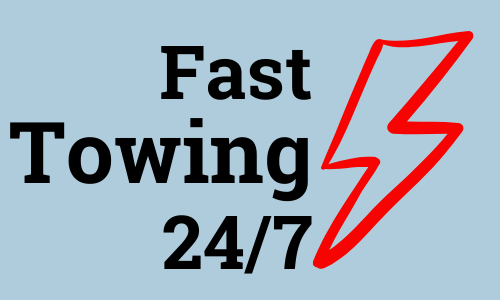HOV lanes: What are they and how do they impact truck drivers?
If you’ve traveled urban areas of the U.S. for any length of time, you’ve probably noticed the increasing prevalence of High Occupancy Vehicle (HOV) lanes and Express Lanes.
Essentially, these lanes, which are intended to increase the efficiency of rush hour traffic, are two-way travel corridors. During the morning rush hour, they open to allow commuters to enter and travel through the metro area more easily; during the afternoon rush, the direction reverses, allowing traffic to exit the city.
Normally, an HOV lane requires a minimum of two passengers per vehicle and is intended to encourage carpooling. Travelers in HOV lanes can expect to drive alongside the other lanes headed in the same direction at normal speed limits, saving time and decreasing traffic buildup in the commuter lanes.
HOV lanes aren’t without their problems. The process of entering and exiting the lanes can create congestion, especially if drivers are unfamiliar with how the lanes work.
But in many metropolitan areas in the U.S. and around the globe, HOV lanes are an effective means of reducing traffic congestion during the busiest times of day.
Of course, tractor-trailers are not allowed to use HOV or Express lanes. However, if the lanes are used properly by four-wheel traffic, the result could be smoother passage along the regular travel lanes.
Exactly how DO these lanes operate? More specifically, how do transportation departments manage to shift the direction of HOV lanes in just the few hours between the end of morning rush hour and the beginning of the afternoon exodus from the cities? And who created them in the first place?
History of HOV lanes
HOV lanes are not new. The first HOV lane was opened in back in 1969 along a section of Interstate 95 in northern Virginia. This lane was limited to bus traffic, but its success soon led to other areas adopting it for carpool purposes.
By the mid-1970s, Washington, D.C., Los Angeles and Houston all had HOV lanes. Today, HOV lanes are used in at least 30 of the 50 U.S. states.
Studies of HOV lane efficiency released by the U.S. Department of Transportation indicate that they reduce congestion by up to 20% and decrease travel times by 30%. They also play a role in reducing accidents during periods when highway accidents can severely impact traffic flow, such as morning and evening rush hours.
Today, some HOV lanes have been transformed into HOT (High Occupancy Toll) lanes. Use of these lanes requires toll collection, typically via the EZ-Pass system. Regardless of the configuration, many four-wheel drivers seem to prefer HOV lanes. Some drivers even try to bluff their way into the HOV lanes by placing “dummy” passengers in their vehicles to circumvent the minimum two-passenger occupancy rules.
Types of HOV lanes
According to the Federal Highway Administration, there are three main types of HOV lanes used in the U.S. today — exclusive, contraflow and concurrent.
Exclusive
These are facilities or lanes built within the freeway right-of-way that are physically separated from the general-purpose freeway lanes and are used exclusively by HOVs for all or a portion of the day.
These lanes may be separated from other traffic by either a concrete barrier or by a wide painted buffer. These may be two-directional, or reversible.
Contraflow
This type of HOV lane, typically the innermost lane, is usually set apart from off-peak (opposite) flow by movable cones, pylons or concrete barriers. Contraflow lanes are usually operated during peak periods only.
Concurrent Flow
These lanes, normally either the inside lane or shoulder, run in the same direction as other lanes and are not physically separated from other traffic. They may be designated as HOV lanes for all or part of a day and can be marked with paint striping and signage.
How they work
On a six-lane highway, HOV lanes add a seventh lane, separating opposite-flowing traffic. Lanes that are closed can be indicated by simply installing a “Road Closed” sign at one end of the HOV lane while the other end remains open. While this method of directional control can work, it is more dangerous than opening and closing lanes by mechanical means.
For applications where safety is a concern, a machine is used to move concrete lane barriers from one lane to the other while the HOV lane is closed midday. These barrier transfer machines, commonly known by the trade name “Road Zipper,” move along the barrier line, slightly lifting the barriers, which then travel through the machine and come out the other end a lane (sometimes two lanes) from where the barriers entered.
This screenshot from video shows a Road Zipper at work on San Francisco’s Golden Gate Bridge. (Courtesy: Lindsay.com)
The zipper machines have a conveyor channel in their undercarriage that can pick up 1,000-pound concrete barriers and move them along the channel, where they exit to the right or left of where they entered the machine. Barriers are linked together to ensure a smooth transfer as the machine moves along them at speeds of around 5-10 mph. The machines can hold as many as 50 feet of concrete barriers at a time, depending on the overall length of the undercarriage. The construction and engineering of the zipper machines allows them to operate without creating traffic congestion in either direction — although if you’ve driven alongside one of the machines, the mere sight of them in action may be enough to slow traffic temporarily.
Road Zipper machines were invented in the mid-1980s and first put into notable use on the Aukland Bridge in New Zealand in 1990. They later appeared in Hawaii in 1998, in Delaware in 2000 and on San Francisco’s Golden Gate Bridge in 2015.
While these applications were for bridges, Road Zippers have also been used in highway applications in numerous cities including Boston, Dallas, New York, Philadelphia and San Diego.
Here to stay
Whether you love them or hate them — or really don’t care — HOV lanes are here to stay in the nation’s urban centers. In most cases the lanes are restricted and 18-wheelers are not allowed to use them.
Even so, truck drivers should be on alert when driving in areas with HOV lanes. Highway safety can be compromised when HOV lane users cut across several lanes of traffic to access an entrance. Then, when the HOV lane ends, merging traffic can also be an issue. It’s safest to make sure you’re familiar with the HOV lanes in the cities where you normally drive.

